Samsung Galaxy S21 Ultra Review: A big improvement
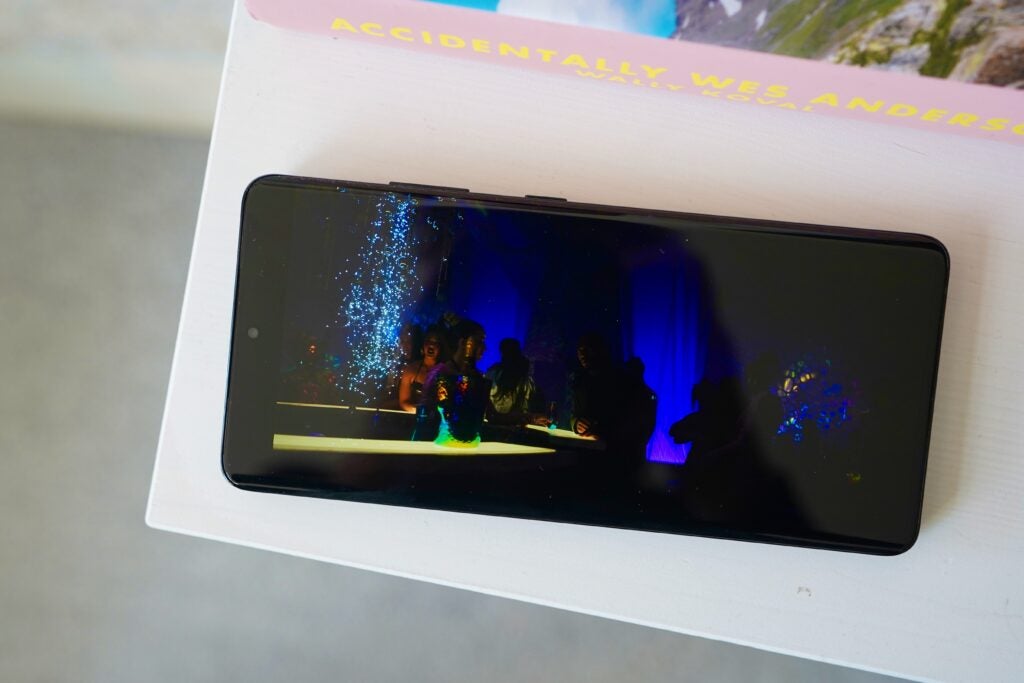
The Samsung Galaxy S21 Ultra phone stands as the most technologically advanced model in the new flagship lineup.
The Ultra was unveiled alongside the more modest Samsung Galaxy S21 and Galaxy S21 Plus and is the highest-specced model available. As such, if you plan to pick up the device, then you’ll need a fairly bulging wallet.
With up to 16GB of RAM, 512GB of storage, a 120Hz WQHD+ display and a 108-megapixel camera, this is Samsung’s no-compromise attempt at delivering the best Android phone ever.
However, considering the regular S21 is far cheaper and gets the job done, do you really need to spend £1149/€1249/$1199 on a phone anymore? Here’s what we found after thoroughly testing the handset.
Samsung Galaxy S21 Ultra – Price and release date
-
Galaxy S21 Ultra Pre-order: Carphone Warehouse | Vodafone | Virgin Mobile | Mobiles.co.uk
The Samsung Galaxy S21 Ultra was made available for pre-order on 14 January, immediately after it’s launch. It will hit retail stores on 29 January.
The Galaxy S21 Ultra is designed to be a true “flagship” phone and, as such, this is reflected in its price. The starting RRP of the Samsung Galaxy S21 Ultra is £1149/€1249/$1199, which is marginally less than the Note 20 Ultra 256GB model and more than the iPhone 12 Pro Max.
We’d expect the Galaxy S21 Ultra to be available through UK and US network vendors, if you don’t wish to buy the handset outright and prefer to pay in instalments.
Of course, with all non-essential shops currently closed in the UK, you’ll only be able to get these phones online right now.
Design and screen – The Samsung Galaxy S21 Ultra writes the wrongs of its predecessor
-
The new design is a huge improvement, and for such a sizeable phone I found it feels comfortable to hold, more so than the iPhone 12 Pro Max
-
You can finally enable Adaptive Smoothness (aka 120Hz mode) and the highest WQHD+ resolution at the same time
-
It’s one of the largest, and heaviest, phones around
Taking the phone out of the box, it’s immediately obvious that two notable areas Samsung has made improvements compared to the older S20 Ultra relate to the S21’s screen and design. While neither were particularly poor, the bevvy of big and small changes add up to make this year’s device the one Samsung really should have launched last year when it firstintroduced the ‘Ultra’ branding.
In my opinion, the screen is the real star of the show. If you value a quality display over every other feature, then the Samsung Galaxy S21 Ultra makes a wonderful first impression.
It’s big at 6.8 inches, ever-so-slightly curved at the edges and, and according to Samsung, can peak at a whopping 1500 nits of brightness. Sadly due to lockdown restrictions I didn’t have a colorometer to hand to check this figure, but with real world use it performed exceptionally well. Fire up some HDR video through Netflix – I used the neon-lit Altered Carbon as a test – and you’ll really see that brightness come into its own. It’s likely to be small in comparison to the displays of other tech you may have around the home, but there’s every likelihood that the S21 Ultra’s screen will be the finest.

In more practical scenarios, this level of brightness removes the risk of any issues with outdoor visibility, even in very sunny conditions. I never struggled to read the screen, even when using it in direct sunlight.
In a move that shows the degree to which Samsung is positioning this handset as the ‘true’ S21 flagship, this is the only phone of the trio to ship with both an adaptive refresh rate that can move between 10Hz and 120Hz and maintain a 1440p WQHD resolution. The icing on the cake is that both of these features can finally be used together, something that wasn’t possible with any of Samsung’s 2020 phones.
While it can be difficult to demonstrate how much of a difference faster refresh rates make without actually having the phone in your hands, it’s certainly something you’ll miss when it isn’t available. Everything feels so much faster, so much smoother and so much more responsive. The effect is even more welcome as an increasing number of games take advantage, offering higher FP options.
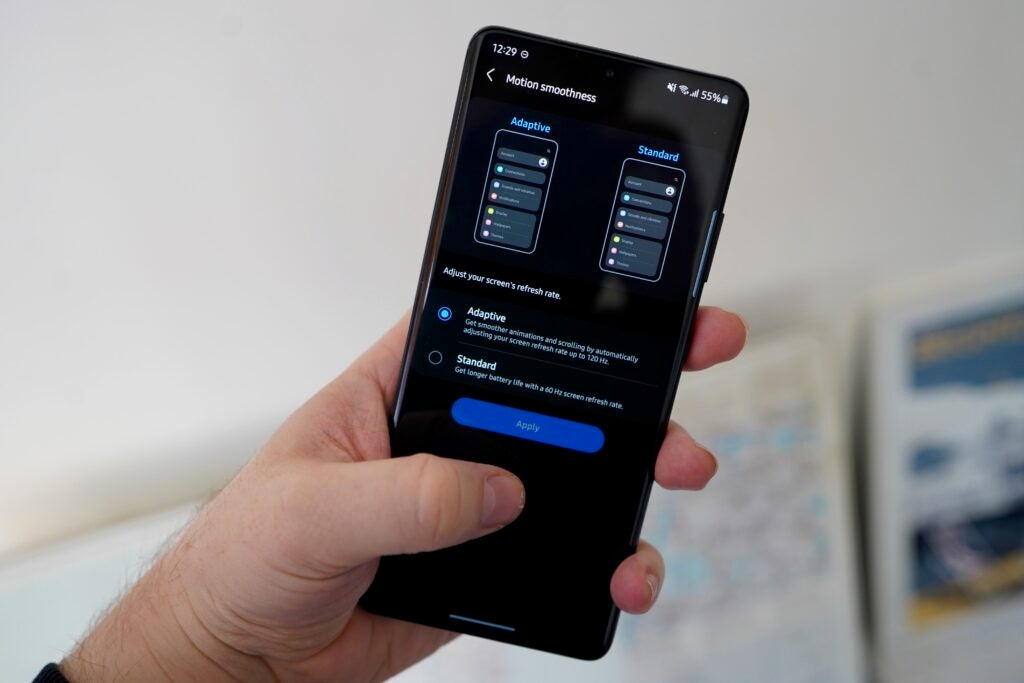
The adaptive nature of the refresh rate offers an interesting benefit, by way of improved battery life. The idea is similar to the workings of ProMotion on Apple’s iPad Pro, rattling up and down the display speed to ensure that energy isn’t being wasted if there’s no visible benefit.
For instance, there’s no point running at 120Hz when you’re simply watching a 30fps YouTube video or 24fps film on Netflix. The adaptive refresh rate tackles this issue, saving battery life in the process.
There’s a very welcome ‘Eye comfort shield’ option that tones down some bright and white colours, giving the screen more of an orange look. Obviously, this should be disabled when you want accurate colours; however, in the evenings and early morning I’ve noticed it makes the screen a lot easier on the eyes.
I also found the S21 Ultra’s in-display fingerprint scanner is a step up on the S20-family’s. It’s significantly faster and more reliable than the previous Samsung phones I’vetested. Out of 50 unlock attempts, the S21 Ultra only ignored my thumb press on five occasions; this figure was around 15 on the Note 20 Ultra.
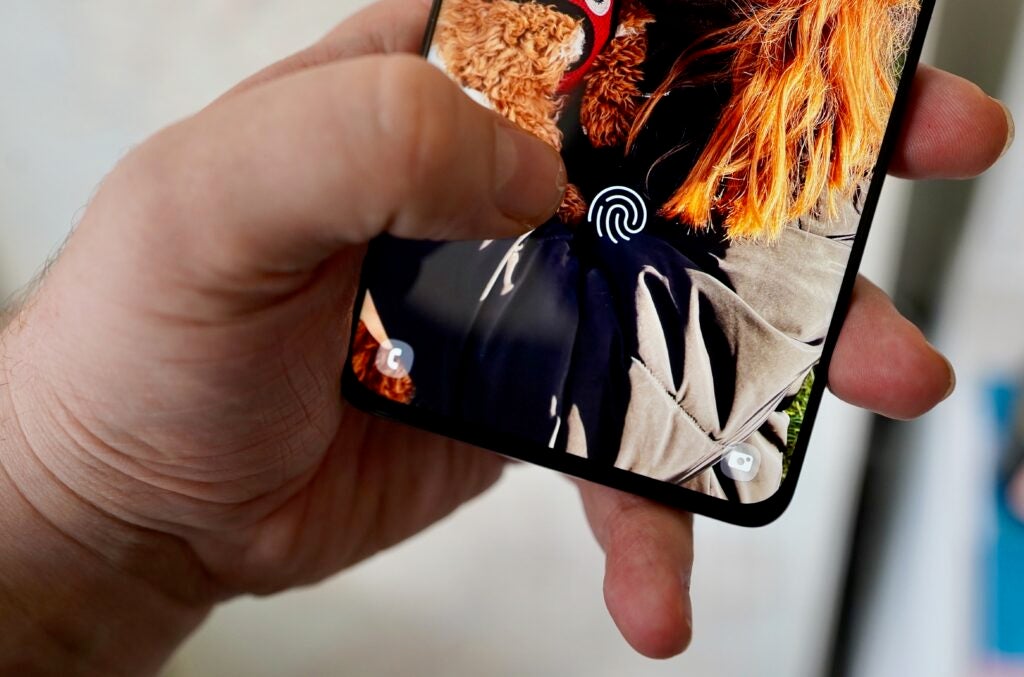
During a time where the benefits of even excellent face-unlock systems are stunted by mask-wearing, having a fast physical sensor is more welcome than in previous years.
My only issues with the screen are relatively minor. I’d still prefer it to be completely flat, rather than curved, since those edges result in some annoying reflections and contribute to accidental presses. The default ‘Vivid’ mode is also a little too saturated for my taste, especially when displaying bright colours; the ‘Natural’ option is a little more…well, natural and gives colours a more balanced realistic look. This is the setting I’d recommend most people use.
I’d also completely ignore the video enhancement option, since it makes videos too bright and often uncomfortable to watch. Aside from those issues, this is the best screen on any phone right now.
I’d certainly say that the Galaxy S21 Ultra is up there with the best when it comes to design, too, though you really need to appreciate big phones to enjoy using this beast. It weighs in at 228g, which is the same weight as the iPhone 12 Pro Max – and it will only get heftier upon adding a case.
| Model | Dimensions | Weight |
| Samsung Galaxy S21 Ultra | 75.6 x 165.1 x 8.9mm | 228g |
Compared to Apple’s most sizeable handset, however, the Galaxy S21 Ultra is the nicer phone to hold. It’s slightly narrower, and the rounded sides make it far comfier in the hand than the harsh edges of the 12 Pro Max I tested last year.
The most obvious shift is the new camera module, which is now more part of the overall design of the phone, rather than just looking like it’s been stuck on the back at the last minute.
The large module blends into the metal rails and is striking as a result. Combined with the new matte finish, available in either black or silver, and you have a phone that looks futuristic without feeling gaudy.
The buttons around the sides are clicky and responsive, if a little on the thin side, and the requisite IP68 rating for protection against accidental drops in water is present too. Those looking for a reintroduction of the 3.5mm headphone jack will be disappointed, plus there’s no microSD in the SIM tray now, either.
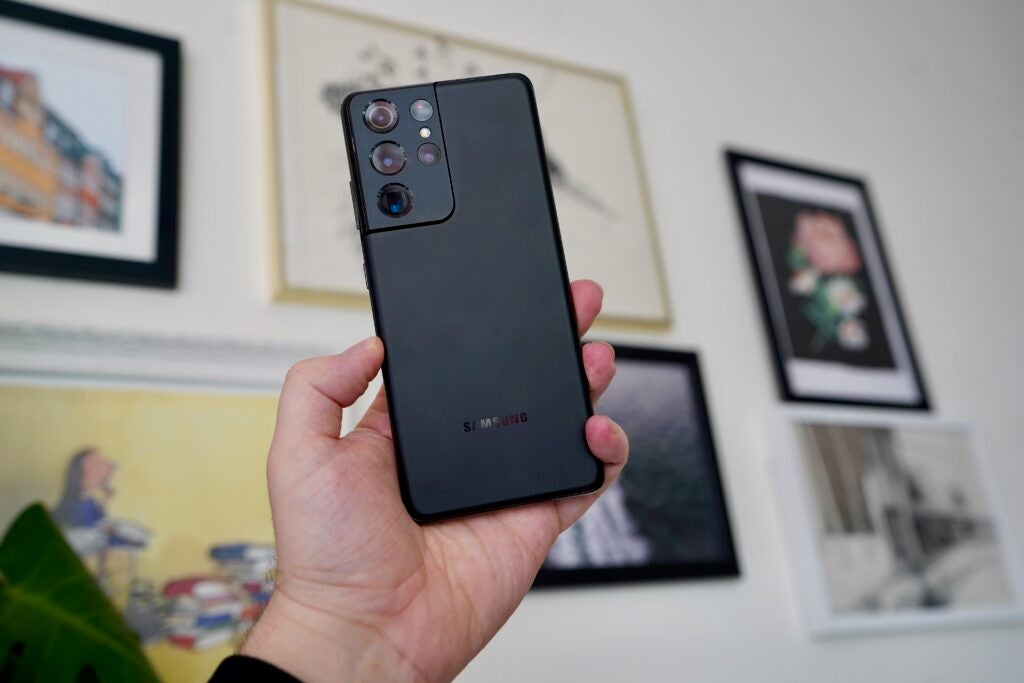
Samsung Galaxy S21 Ultra Camera – A versatile and feature-packed quad-camera
-
The dual zoom lenses seriously improve the camera’s ability to capture far away objects
-
While it’s not the fastest camera to shoot with, the focussing issues from the S20 Ultra are gone
-
You’ll get a lovely depth of field if you shoot at full 108MP
The camera system on the Galaxy S21 Ultra seems quite intimidating at first, but there’s every chance it could one of the best camera phones by the end of year. There are huge numbers floating about, four distinct lenses and a whole host of software features hyped up by Samsung. See the table below for a breakdown of the specs:
| Model | Rear wide | Rear ultra wide | Rear Tele 1 | Rear Tele 2 | Front | Video |
| Samsung Galaxy S21 Ultra | 108MP, OIS, f/1.8 | 12MP, f/2.2 | 10MP 3x zoom, OIS, f/2.4 | 10MP 10x zoom, OIS, f/4.9 | 40MP | 8K, Single Take 2.0, Directors View |
Instead of following Apple and Google’s lead, where much of the camera work is done computationally in the background, Samsung is hoping the use of high-end glass in the camera lenses will give it a lead in image quality.
For the most part, I have been impressed by the phone’s camera skills. Testing in various shooting conditions I found it’s one of the most versatile mobile phone cameras around. No other phone, not even the iPhone 12 Pro Max, gives you so much variety in how you can shoot. The zoom skills are excellent and a seriously notable improvement over the Galaxy S20 and being able to shoot video from multiple cameras at once is a neat trick I have found myself using on a few occasions.
The main camera is a new and upgraded 108MP f/1.8 sensor, which combines multiple pixels together to shoot 12MP snaps. You can easily switch to full 108MP pictures, and if you’re willing to lose some of the camera’s zoom skills and sacrifice more of the phone’s storage (about 30MB per shot during testing). This is a pain, but if you do it I found the 108MP option is where the camera shines brightest.
When shooting at 108MP you get a lovely, and completely natural, blurred background (aka bokeh) that is missing from the 12MP images.

There’s extra detail too, and this is especially noticeable if you’re capturing photos of animals. We’ve just got a new puppy and with little else to take pictures of due to being stuck at home, I have mainly been testing this camera chasing Peach around the flat. Get her still and the pictures are great, though shooting at high-resolution does slow things down and it’s far from ideal if you’re trying to capture something moving.

Samsung has toned down how the camera captures colours a bit here, especially when you’re taking selfies with the 40MP front camera. You even get a pop-up asking you whether you’d like a more natural image when you first flip to the front camera.
With that being said, there’s still a typically ‘Samsung’ look to photos. Reds are bright, greens are on the verge of being lurid, low-light pictures are on the yellow side and everything looks great on Instagram. There’s a little more sharpness to the photos too, especially when compared to photos taken on the latest iPhones.


Outside of this, the ultra wide sensor hasn’t seen a huge raft of upgrades, but it’s still one of the best around and ideal for shooting landscapes and getting more quirky results. Then there’s the duo of zoom cameras which can, in theory, take you 100x closer to the subject.
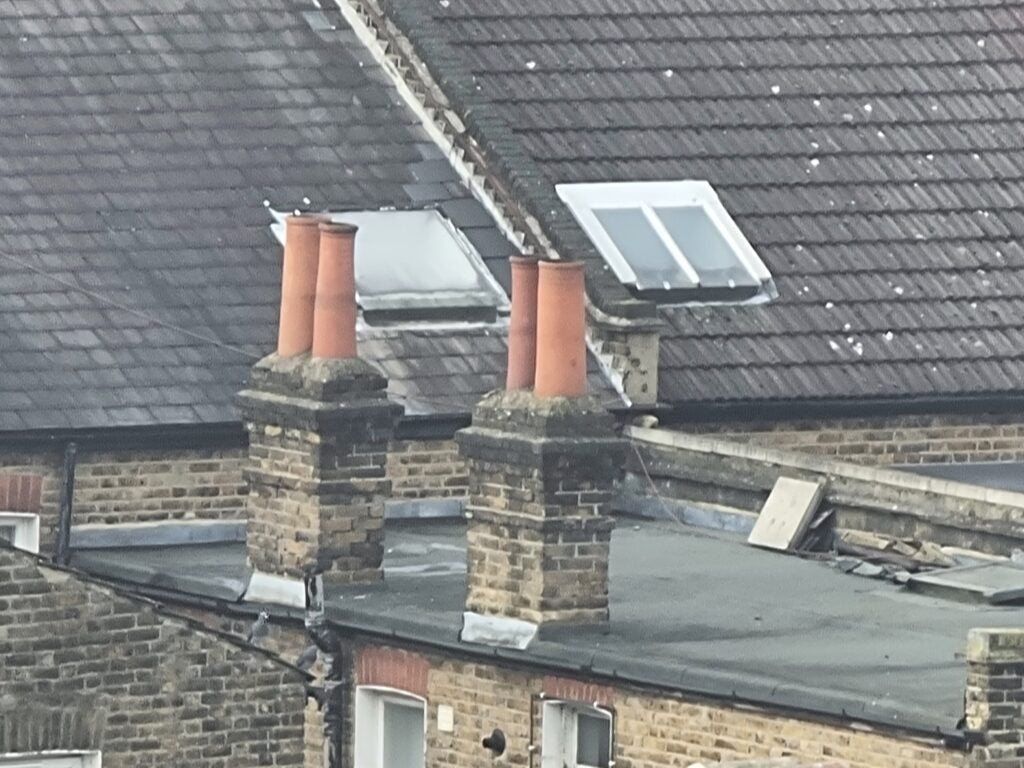
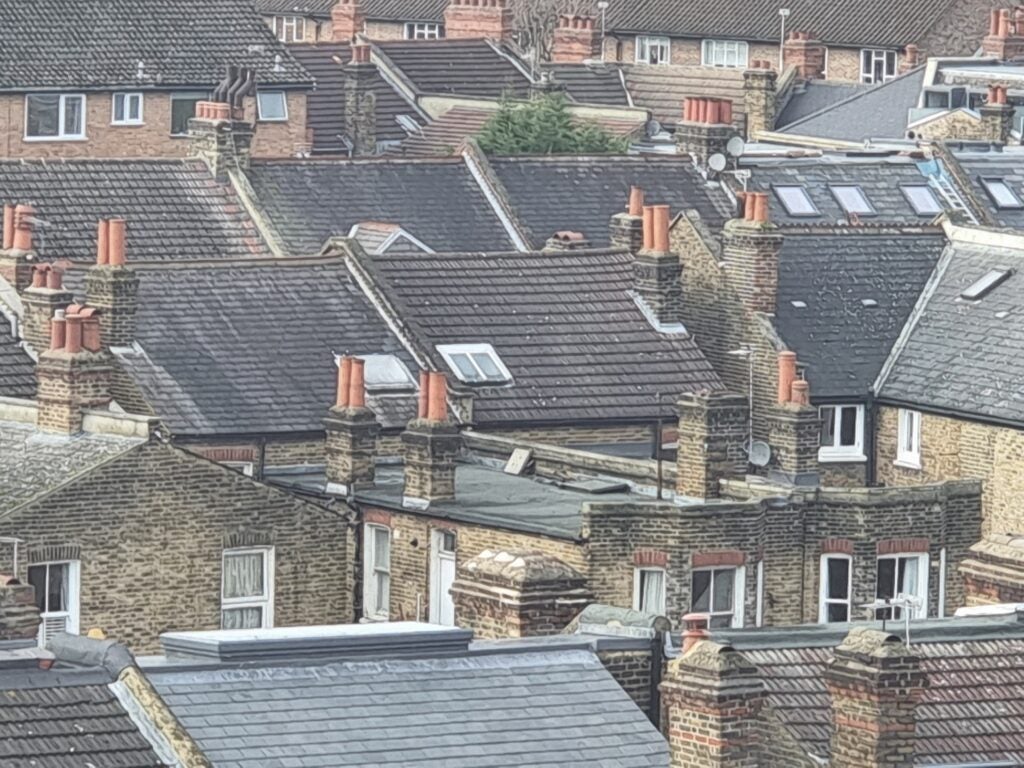
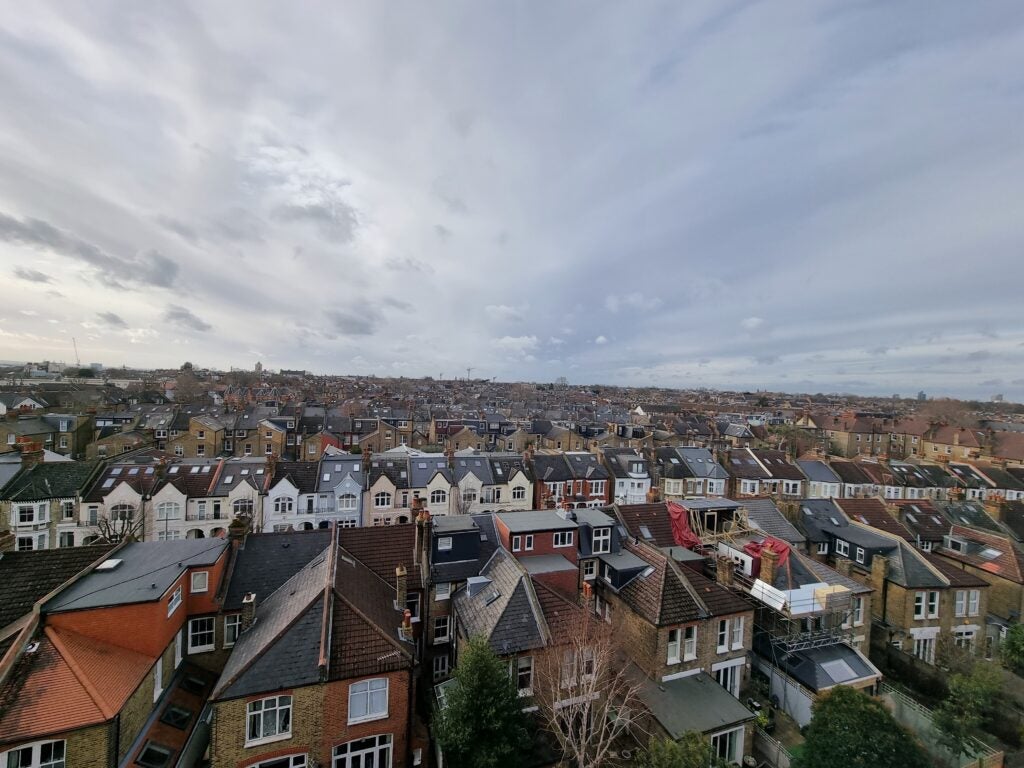
I wouldn’t bother going that far, but you’ll get great results if you stick to using up to 10x zoom and often get passable results at 30x if the lighting is good. There’s a nifty anti-shake software tweak too that adds a hit of much needed extra stabilisation. I found you still need to use a tripod if you want the best results though.
Another big focus for the S21 Ultra is video. You can shoot at 8K 24fps if you really want to show off the power of the internals (and you have somewhere to view that high-res footage bacK) or you can drop down to 4K60/30 for something a bit more manageable. This also allows you to shoot from multiple cameras at once, seeing a live preview for each one in real-time.
8K support is clearly here for the ‘wow factor’ and to tie in with Samsung’s dominance of the 8K TV market, but really just shoot in 4K as the results are so much better. Results are good; a quick run around the park showed off strong stabilisation and the mics do a decent job at cancelling out wind noise if you’re speaking directly at the phone. I still prefer the footage from an iPhone 12 as it feels more realistic and smoother, but as with all video which is better will largely be down to personal taste.
Where Samsung loses some of its shine is the software. Shooting at full 108MP still leads to a noticeable slowdown. On top of that, I couldn’t find an easy way for the camera to automatically jump into the brightness-increasing low-light Night Mode. Instead I had to manually flip to the option. I also found the brand’s AI scene optimiser doesn’t cope well with landscapes (everything is too green), even though it does add an extra sparkle to food shots.
Performance – Can the Exynos 2100 match up with the Qualcomm competition?
-
You’ll still either love or hate Samsung’s custom UI
-
There’s no microSD, however storage options go up to 512GB and RAM maxes out at 16GB, so storage won’t be an issue if you opt for the top specced version
-
You’ll find wide 5G support, good stereo speakers and strong call quality
As has become common for Samsung phones, the region where you buy the Galaxy S21 Ultra will determine the chipset used inside. US buyers will get a model with the Qualcomm Snapdragon 888, while we in the UK are treated to the Exynos 2100.
| Model | Display | Processor | RAM | Storage | Battery |
| Galaxy S21 | 6.2-inch FHD+, 120Hz Adaptive AMOLED | Snapdragon 888 (US), Exynos 2100 (UK, Europe), 5G | 8GB | 128/256GB (no microSD) | 4000mAh cell, wired and wireless |
| Galaxy S21 Plus | 6.7-inch, 120Hhz Adaptive AMOLED | Snapdragon 888 (US), Exynos 2100 (UK, Europe), 5G | 8GB | 128/256GB (no microSD) | 4800mAh, wired and wireless |
In the past we’ve found Exynos versions aren’t quite as good as their Snapdragon siblings. But during benchmarking I found that a lot of my past issues with Exynos chips have been fixed..
Of course, I can’t pass any judgement on the Snapdragon 888 model so all my thoughts on performance and battery come from the Exynos 2100 model with 12GB RAM, which proved suitably fast and power efficient during testing.
As with any flagship Android phone with a 120Hz display, you might feel a lot of benefits of this are wasted. It won’t feel dramatically faster unless you’re upgrading from a phone that’s three/four years old and these days even mid-range chips have enough grunt to push Android games to their limits.
But that’s not to say the advancement of tech under-the-hood is pointless. Many of the benefits of these new chips are in areas like AI, giving you faster photo enhancements for instance. It also enables other clever camera tricks, like being able to view live video from all the cameras at once and recording 4K60 footage from different sensors simultaneously.
Both chipsets powering the S21 series have built-in 5G modems and the S21 Ultra supports multiple bands. I still haven’t got 5G service where I live and considering we’re all working from home due to current circumstances, I haven’t been able to test the service on this device. But I will when the lockdown lifts.
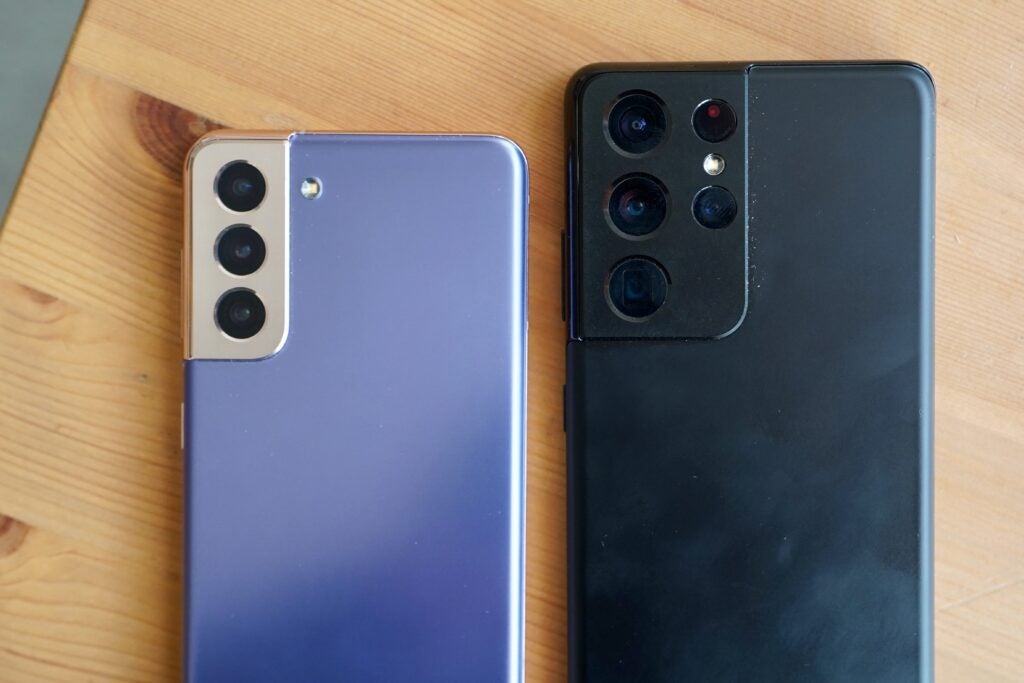
The Galaxy S21 Ultra is the first main flagship device from the brand to ditch expandable microSD support in a number of years, meaning you need to choose wisely when you buy the phone. This feels like more of an issue on the S21 and S21 Plus, as they don’t offer the 512GB option you can get with the Ultra.
For most this won’t be an issue as even the base 128GB is enough, though I would suggest spending a bit more for a 256GB version. If you plan to capture a lot of 108MP snaps (roughly 30MB each) and 8K video (around 1GB for two minutes) then you’ll likely see space fill up quickly.
| Model | Display | RAM | Storage | Battery size | Chipset |
| Samsung Galaxy S21 Ultra | 6.8-inch AMOLED, 120Hz adaptive, WQHD+ | 12/16GB | 128/256/512GB (no microSD) | 5000mAh | Snapdragon 888 (US), Exynos 2100 (UK, Europe), 5G |
For the first time, Samsung has brought S Pen compatibility to the mainline S series line. As an added bonus for past Samsung phone owners, S Pens from older Note phones will also work with the S21 Ultra. The downside is that, unlike with the Note though, the stylus here is an added extra (£32/$39) and it doesn’t slide into the phone itself. Instead, Samsung is selling some rather chunky cases that’ll keep the pen safe.
After a few days of use, I didn’t notice any real difference in how the pen worked and it offered near identical performance to what I experienced testing the Note 20 Ultra. It’s just as responsive to draw with and it remains handy to have. As there’s no way to charge the S Pen on the S21 Ultra, some of the features that require Bluetooth are gone, however. But truthfully, I can’t say I have used these Air Gestures outside of reviewing a Note so the loss feels minimal.
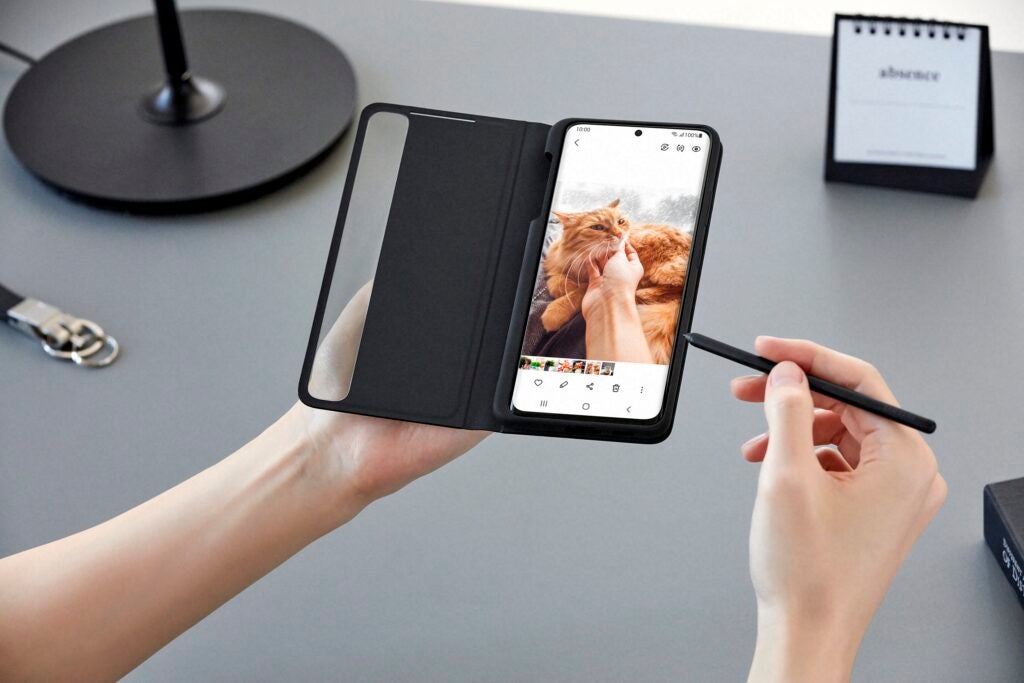
There’s no denying Samsung’s software has improved dramatically in recent years and there are some genuinely excellent additions here that Samsung should probably shout louder about. DeX is great for outputting (even wirelessly) your phone onto a monitor and you’ve now got the Google Discover panel rather than one of Bixby’s useless homepages it’s even more useful. Yet, a lot of the software remains frustratingly different from Google’s interpretation of Android and seems to have been designed simply for the sake of it.
On Android 11, I love having quick access to G Pay and my Home controls by quickly pressing the lock key. On the S21 Ultra, you have to go into the notification panel, hit ‘Devices’ and access the shortcut from there. Why ruin a very handy feature for no clear reason?
It’s a similarly annoying story if you’re trying to connect up accessories. There are multiple apps and drivers required for something as basic as pairing a smartwatch and many things require a Samsung account.Bloatware is a big issue too, with Samsung pre-installing apps from Microsoft, Google and itself – many of which offer the same functionality. There are also some minor bugs in the software, causing random bouts of slow-down. Hopefully, these will be ironed out in future updates.
Battery life – Galaxy S21 Ultra has a big battery and big endurance
-
Expect to get up to and around eight hours of screen-on time
-
There is no charger in the box
-
Charging tops out at 25w, below much of the high-end competition
Samsung has packed the S21 Ultra with a giant battery and during my week of testing it has offered impressive performance, typically offering seven to eight hours of screen-on time per charge.
That means even if you’re a heavy user it should get you through even the busiest of days. This is with the default 1080p resolution and adaptive refresh rate enabled, up things to 1440p and you get roughly an hour less.
Of course, I feel the need to preface this with the usual note that I am currently spending a lot more time inside, not commuting and using Wi-Fi pretty much all the time. These are much safer conditions for a phone to be used that typically give you better endurance. So, once things are Back To Normal it’ll be interesting to see if my results change.
During my synthetic tests the S21 Ultra again offered good stamina. An hour streaming Spotify to a pair of Bluetooth headphones (screen off) took off 4%, while an hour of HDR Netflix ate through 7%. You can get more if you lower the brightness, but the result is dimmed somewhat.
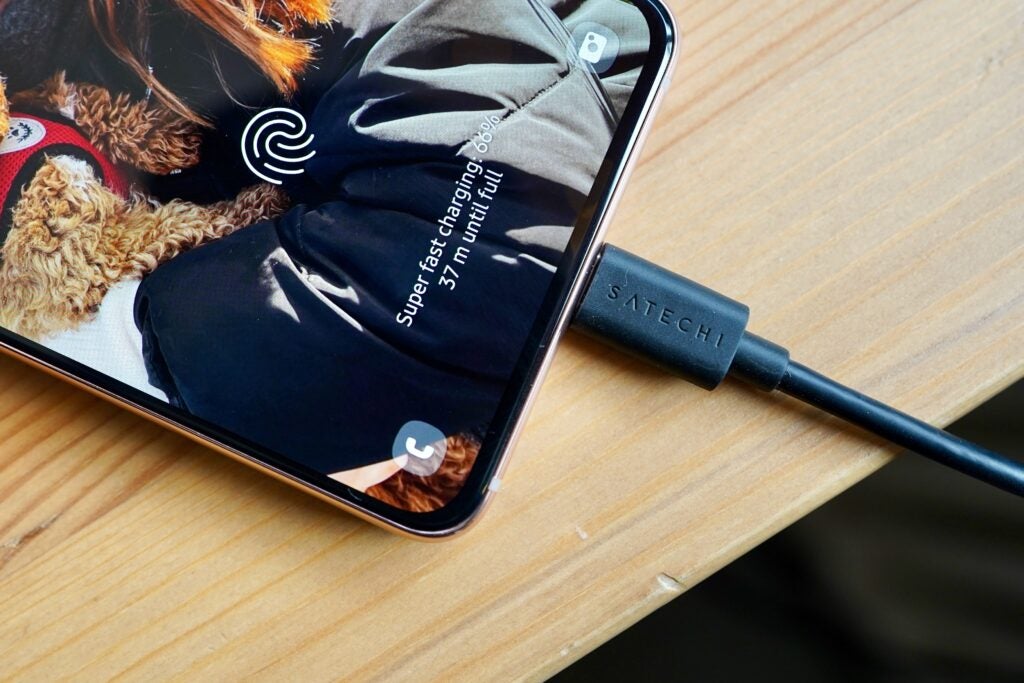
When it comes to charging, the Galaxy S21 Ultra is less advanced. The max 25w wired charger and 15w wireless are a lot slower than much of the Android competition and it’ll take around 1 hr 40 to go from 0-100% with a typical laptop and a bit less if you’re using one of Samsung’s own Fast Chargers.
Having gotten used to plugging something like the OnePlus 8T in while I shower in the morning and having it nearly hit 100% by the time I’m dressed, this is a shame – though likely better for battery health in the long term.
You’ll also need to provide the charging plug yourself and a pair of headphones inside the box.
Expect to see this a lot this year and as USB-C is so widely used now across some of the best cameras, best laptops, tablets and even game consoles it’s not so much of an issue. If you don’t have a plug to use with the included cable, Samsung has lowered the prices of its own and there are loads of suitable options on Amazon from brands like Anker and Aukey.
You should buy the Samsung Galaxy S21 Ultra if
-
You want the very top-spec Samsung phone going
The Galaxy S21 Ultra is an expensive phone and it’s this price because it’s packed with top-drawer components – fast performance, large amounts of RAM and storage, high-quality display and lots of camera sensors.
Samsung took out some features from the S21 and S21 Plus, so if you want things like a WQHD+ display, more than 8GB RAM and lots of storage you’re going to have to choose the Ultra.
-
The display quality is vitally important
The display is the star here. It’s big (6.8-inch), only slightly curved and packing both a WQHD+ resolution and adaptive refresh rate. It’s also ridiculously bright and will likely be the best screen you’ve got to watch HDR content on.
-
You’re happy with a big, heavy phone
There’s no getting away from it – this is a big phone. It’s definitely a two-handed device and at 228g it’s heavy, even more so if you add a case. Of course, big phones come with plenty of upsides, like the bigger display and larger, longer-lasting battery.
You should not the Samsung Galaxy S21 Ultra if
- Having high-end specs isn’t that important
If you’re not worried about having the most RAM, swathes of storage and fancy extras like 8K video recording then you might end up paying more for stuff you don’t really need here. The S21 is still a great phone and it’s far cheaper.
- Pocketability is key
While it’s a plus for some, the large size will definitely put many off. Make sure you’re comfortable with such a device before investing.
- You want very fast charging
25w charging isn’t slow, but compared to phones from OnePlus and Huawei that can fully charge in around 40 minutes the Ultra feels like it’s lagging behind.
The post Samsung Galaxy S21 Ultra Review: A big improvement appeared first on Trusted Reviews.
Source Trusted Reviews ,Home Appliances Reviews

No comments